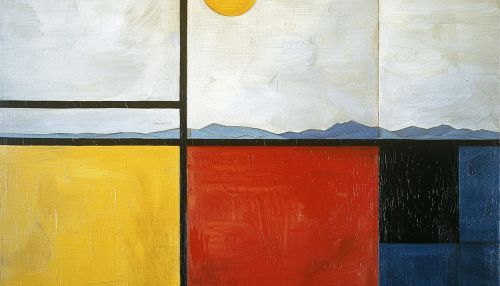Piet Mondrian
Early Life
Piet Mondrian was born on March 7, 1872, in Amersfoort, the Netherlands. He was the second child of Pieter Cornelius Mondriaan, a headmaster at a local primary school, and his wife, Johanna Christina de Kok. Mondrian's early exposure to art came from his father and his uncle, Fritz, who was a painter.
Education and Early Career
Mondrian began his art education at the Amsterdam Academy of Fine Arts at the age of 20. He studied there for five years, honing his skills in drawing and painting. After completing his studies, he returned to his hometown and started his career as a teacher while continuing to paint.


Artistic Evolution
Mondrian's early works were largely influenced by the Dutch landscape, with a focus on naturalistic and impressionistic styles. However, his style began to evolve after he was introduced to the works of the Symbolist painters. He started to incorporate more abstract elements into his works, gradually moving away from the realistic depiction of nature.
De Stijl Movement
In 1917, Mondrian, along with Theo van Doesburg, founded the De Stijl movement. This movement, also known as neoplasticism, advocated for the use of simple geometric shapes and primary colors. Mondrian's works during this period, such as "Composition with Red, Yellow, and Blue," became iconic examples of this style.
Later Life and Legacy
Mondrian moved to New York in 1940, escaping the onset of World War II. His later works, such as "Broadway Boogie Woogie," were influenced by the city's grid system and the jazz music he loved. Mondrian died in New York on February 1, 1944. His legacy continues to influence many areas of design, from architecture to fashion.
